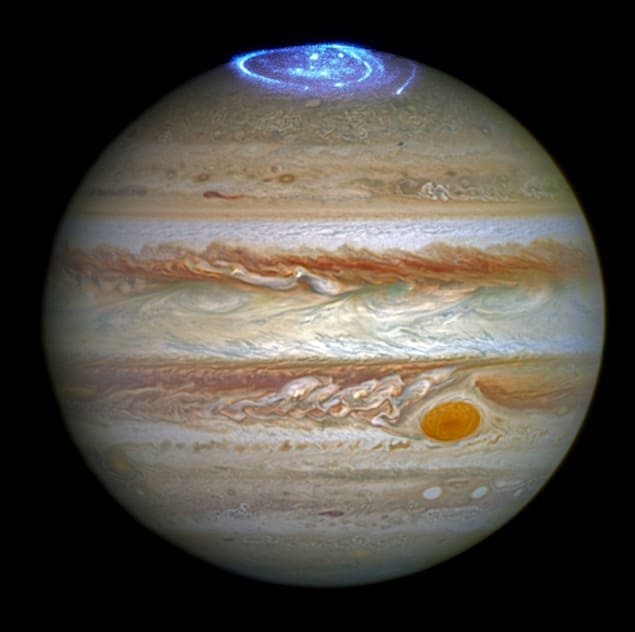
An auroral X-ray “hot spot” has been observed near Jupiter’s south pole for the first time. Astronomers had expected the dynamics of the planet’s northern and southern auroras to correspond – as they do on Earth – so were surprised to find that the brightness of two hot spots varied independently. Whether or not the measurements reflect a genuine discrepancy between the poles’ behaviour has consequences for our understanding of the physics behind Jupiter’s auroras.
Rare opportunity
Jupiter’s orbit and axial tilt with respect to Earth mean that chances to observe the giant-planet’s northern and southern auroras simultaneously are few and far between. Such opportunities arose in 2007 and 2016, and space-based X-ray telescopes Chandra and XMM-Newton were directed to take advantage. Now, an analysis of the data by William Dunn of University College London and collaborators in the UK, US and Spain, has revealed a persistent X-ray hot spot in the southern hemisphere. The southern hot spot has a periodicity unrelated to that of its northern counterpart, which varied much more irregularly during the observation campaign.
Even during favourable configurations like those of 2007 and 2016, the two auroral hot spots can be seen together only briefly: as one comes into view around the curve of the planet’s disc, the other recedes at the opposite limb. The simplest explanation for each pole’s different behaviour, therefore, is that the dynamics really are controlled globally, but that magnetospheric conditions varied during the observation window, suppressing the periodicity as the northern hot spot became visible.
Possible mechanisms
If the inconsistency between the poles is real, several mechanisms might explain it, according to Dunn and colleagues. Various magnetic reconnection processes; ultralow-frequency magnetic-field oscillations; and pole-specific local magnetic conditions have all been mooted.
By combining further X-ray studies over the next two years – while both poles are still visible from Earth – with measurements made in situ by NASA’s Juno mission, the researchers hope to determine whether the observed independence is normal behaviour for Jupiter’s auroras, and discover what this means for the origin of the phenomenon.
The research is reported in Nature Astronomy.



